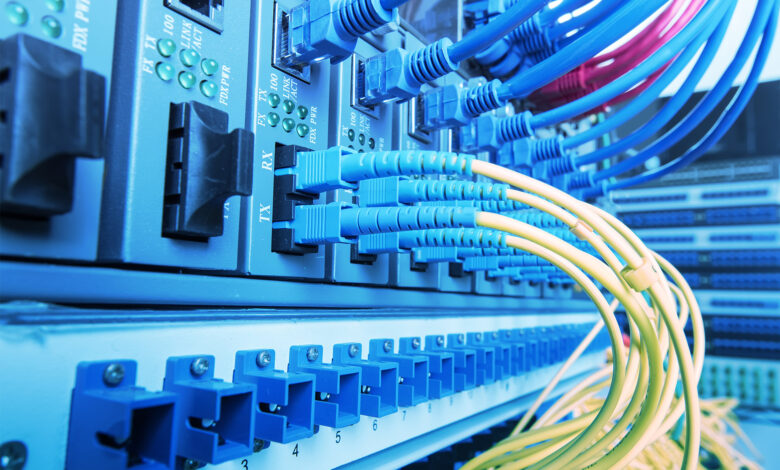The Applications of Fibre Ribbon Cables in Data Networks And Other Fields

In the pulsating heart of our tech-driven world, the quest for seamless data transmission has given rise to a silent hero – fibre ribbon cables. These slender, flat wonders are rewriting the rules of connectivity, ushering in a new era where data networks not only thrive but redefine efficiency and reliability.
With this article, we’ll delve into the applications of fibre ribbon cables in data networks and explore their impact in various fields. But first,
Understanding Fibre Ribbon Cables
Fibre ribbon cables are a specialized type of fibre optic network cables with multiple fibres aligned in parallel and encapsulated within a single, flat ribbon-like structure. Each fibre within the ribbon is individually identifiable and can be terminated independently, offering flexibility and ease of management. The construction of these cables allows for a higher fibre count in a compact form factor, making them ideal for applications where space optimisation is pivotal.
The Varied Utilisations of Fibre Ribbon Cables
Data Networks :
Fibre ribbon cables have found a significant application in data networks, particularly in data centres where the demand for high bandwidth and low latency is critical. The high fibre count in a single cable enables the efficient handling of large volumes of data traffic. Moreover, the flat ribbon design simplifies installation and maintenance processes, reducing the time and effort required for cable management.
In large-scale data centres, where space is at a premium, fibre optic network cables contribute to a more organised and space-efficient cabling infrastructure. The parallel alignment of fibres within the ribbon ensures minimal crosstalk, providing a reliable and interference-free data transmission environment.
Telecommunications:
The telecommunications industry has embraced fibre ribbon cables to meet the growing demand for high-speed internet and advanced communication services. These cables support the deployment of next-generation networks, including 5G, by facilitating the seamless and rapid transmission of vast amounts of data over long distances.
Medical Applications:
In the field of medicine, fibre ribbon cables play a crucial role in medical imaging systems and diagnostic equipment. The high bandwidth and reliability of splicing fibre optic cables make them suitable for transmitting large volumes of high-resolution medical imaging data, such as CT scans and MRIs.
Additionally, fibre ribbon cables are used in endoscopy procedures, providing a flexible and lightweight solution for transmitting video and image data from the endoscope to medical monitors. The compact form factor and durability of these cables make them well-suited for medical applications where space constraints and precision are paramount.
Industrial Automation:
Industrial automation and control systems often require robust and reliable communication solutions. Fibre ribbon cables are well-suited for these applications, providing a secure and high-performance communication infrastructure. The compact design of the cables allows for easy installation in industrial settings, and the parallel alignment of fibres ensures consistent and interference-free data transmission.
The immunity of fibre optic cables to electromagnetic interference (EMI) makes them ideal for use in environments with heavy machinery and electrical equipment, where traditional copper cables may be susceptible to interference.
Military and Aerospace:
In military and aerospace applications, where ruggedness, lightweight design, and high performance are paramount, fibre ribbon cables find extensive use. These cables are employed in avionics systems, communication equipment, and surveillance systems where reliability and data integrity are critical.
The lightweight nature of fibre ribbon cables contributes to fuel efficiency in aerospace applications, while their ability to transmit data at high speeds makes them essential for mission-critical operations. The durability of optical fibres also makes them resilient to harsh environmental conditions, including temperature extremes and vibrations.
To sum it up, fibre ribbon cables have become indispensable in a wide range of applications, revolutionizing the way data is transmitted and communicated in various fields. From data networks and telecommunications to medical applications, industrial automation, and military and aerospace systems, the versatility and performance of fibre optic network cable continue to shape the landscape of modern technology. As the demand for high-speed, reliable data transmission continues to grow, fibre ribbon cables are poised to play an even more significant role in shaping the future of connectivity across diverse industries.





